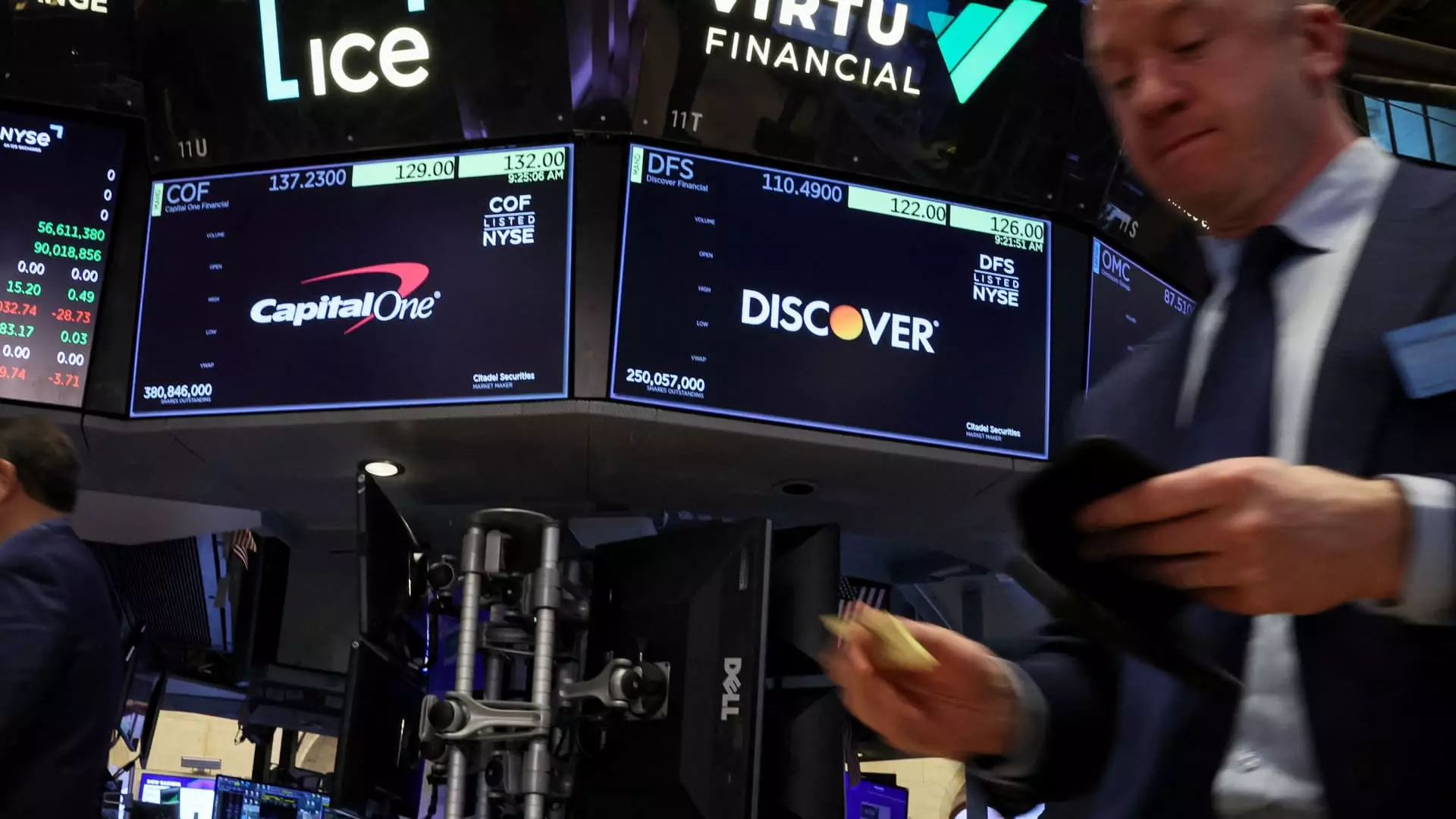In a move that has sent ripples through the banking industry, Capital One Financial Corporation has received the green light from federal regulators for its monumental $35 billion acquisition of Discover Financial. This development is being touted as a watershed moment in the financial sector, but is it truly a game-changer, or merely a high-stakes gamble destined for failure? While many analysts and advocates hail this merger as a beacon of optimism, a closer examination raises important questions about its long-term implications within an increasingly tumultuous economic landscape.
The approval from the Federal Reserve and the Office of the Comptroller of the Currency marks a significant regulatory shift. Under previous administrations, such deals faced intense scrutiny, but the current environment suggests a more lenient approach towards consolidation in the banking industry. However, just because the regulators have waved the deal through does not mean it is without risks. The potential short-sightedness of such a merger could pose catastrophic consequences, especially with the growing concerns over economic stability and ongoing trade tensions under the Trump administration.
Regulatory Euphoria and Its Pitfalls
The euphoria from Wells Fargo analysts, who described the merger as a “clearing event,” is indicative of a broader belief that the regulatory landscape will incentivize further mergers and acquisitions. For many on Wall Street, this is a validation of a more bullish environment for investment banks. But this enthusiasm must be tempered with caution.
A more lenient regulatory regime could lead to reckless consolidation that overlooks the inherent risks of the banking sector, especially when macroeconomic indicators are faltering. As we see increasingly volatile markets impacted by tariffs and trade wars, prudence should replace impulsiveness. The rush to consolidate must not blind us to the regulatory lessons learned from past financial crises, where rapid growth led to devastating systemic risks.
Capital One’s Strategic Play: But at What Cost?
For Capital One, digesting Discover’s capabilities means hefty swings in market position and earnings potential. Owning Discover’s payment network allows Capital One to reduce its reliance on third-party payment processors like Mastercard and Visa. While this strategic positioning on the surface seems prudent, it inherently risks concentrating financial power into fewer hands, potentially stifacing competition and innovation in the long run.
Furthermore, the claim that this acquisition provides “more than enough cushion” against economic uncertainty raises eyebrows. No financial model is infallible, and predicting stability in a climate riddled with macroeconomic doubts is precarious at best. The risks associated with digesting a major competitor must be weighed against the challenges of navigating a perennially unstable economy.
Trump’s Tariff Tango: An Uncertain Climate for Investment Banks
Market sentiment surrounding Capital One’s acquisition must also acknowledge the underlying tensions from the Trump administration’s tariff policies. As markets wade through fears of economic downturn, investment banks are experiencing a slowdown in deal-making that was once expected to flourish. Whether it’s the faltering IPOs from fintech firms to the challenges faced by established entities like Goldman Sachs, the current economic milieu raises poignant red flags about investors’ appetites for risk.
CEO David Solomon’s reflections on a “markedly different operating environment” signal that uncertainty is the prevailing mood, particularly among corporate clients. As investment banking relies greatly on M&A advisory services, the impacts of growing trepidation could inhibit growth and profitability. While the allure of regulatory ease is tempting, the realities of current economic pressures may hinder capital flow and dampen investment enthusiasm.
Wells Fargo’s Long Road Ahead
Interestingly, Wells Fargo finds itself in a nuanced position regarding regulatory changes. Having experienced its fair share of scandals, it has been working towards regaining confidence from regulators. The anticipation of lifting the asset cap signifies hope but also points to the fragility of its recent recovery efforts. There’s considerable distance to traverse before Wells Fargo can genuine expand its investment banking division without falling prey to entanglements of its legacy issues.
As this evolving regulatory environment continues to shape the landscape, one wonders how it will tip the scales for those with chequered pasts, like Wells Fargo. The potential for long-term growth depends on whether these institutions can blend lessons from history with ambitions for future success.
In an age where consolidation and regulatory ease seem to dominate headlines, it is imperative that we remain vigilant. Capital One and Discover’s merger may present opportunities, but it could also set in motion cautionary tales that echo through the corridors of finance for years to come.

